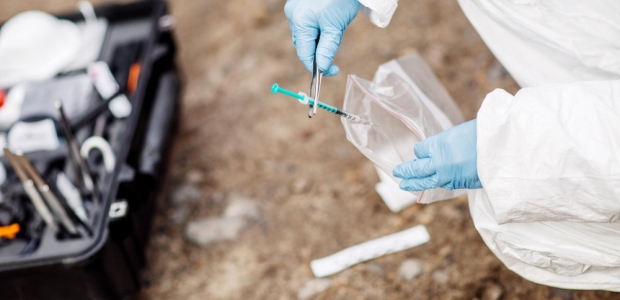
NIOSH and Partners Release New Resource on First Responder Exposure Risks
NIOSH and partners released a new video to help first responders understand the risks of occupational exposures to illicit drugs and what they can do to protect themselves from exposure while responding to an emergency.
NIOSH, partnering with the Fredericksburg, Va., Police and Fire Departments and the FBI Laboratory, released a new video on March 28 meant to help first responders understand the risks of occupational exposures to illicit drugs and what they can do to protect themselves from exposure while responding to an emergency.
The increase in illicit drugs, including fentanyl, and related overdoses across the U.S. poses an emerging threat to first responders, highlighting the necessity of providing responders with tools to protect themselves while on-duty. Law enforcement officers, firefighters, emergency medical services, and others who may be at risk of occupational exposure can benefit from more education and guidance on how to keep themselves as safe as possible.
The "Illicit Drugs, Including Fentanyl: Preventing Occupational Exposure to Emergency Responders" video begins by showing real-life footage from a body camera worn by a police officer responding to an overdose call. By using body camera footage and interviews with officers, the video works to reinforce the importance of following safe work practices and the necessity of proper personal protective equipment selection and use among emergency responders so they can best protect themselves from exposure to illegal and dangerous drugs.
"The close collaboration between NIOSH and our partners in the emergency response community lets us leverage our knowledge and their experience to develop tools to help keep responders safe," said Jennifer Hornsby-Myers, MS, CIH, an industrial hygienist with the NIOSH Emergency Preparedness and Response Office. "This video was developed to educate first responders using a real-life example that should resonate with many emergency responders and gives recommendations for minimal, moderate, and high exposure situations."
First responders are at risk of exposure to these drugs via inhalation, mucous membrane contact through nose, eye, and mouth, ingestion, dermal and needlestick contact. As shown in the video, these exposures could lead to lightheadedness, drowsiness, nausea, vomiting, dizziness, and the rapid onset of life-threatening respiratory depression. Respiratory depression is a slow and shallow breathing that often requires medical attention and can prevent emergency responders from performing their duties.
The safety and health information included in the video can be found on the NIOSH website, and the NIOSH Health Hazard Evaluation report of the actual incident depicted in the video is found here.